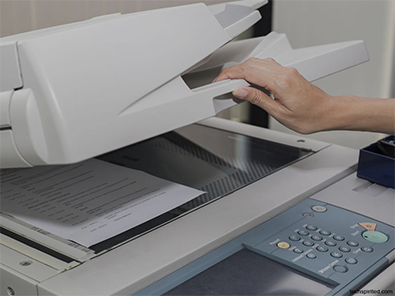Distribution Management and Supplies Network: Technology-Driven Distribution With a Hands-On Approach
Technology is gaining power at a rapid rate, exponential change is not something we can easily reference or put into context. Distribution Management and its subsidiaries, Supplies Network and DM Fulfillment, however, are effecting that change.
- By Jennifer Shutwell
- 01/01/2014
Author and futurist Ray Kurzweil wrote in his 2001 essay “The Law of Accelerating Returns” that “we won’t experience 100 years of progress in the 21st century — it will be more like 20,000 years of progress.” Of course, the concept of experiencing 20,000 years of progress is mind-boggling, but here in the new year, 14 years into the 21st century, we are beginning to sense the magnitude of Kurzweil’s prediction and how technology is playing a critical role in business transformation today.
Although technology is gaining power at a rapid rate, exponential change is not something we can easily reference or put into context. One way to try, however, is to consider the combination of people, processes and technology that is effecting change in the potential and power of companies today. One example of this can be found in Distribution Management and its subsidiaries, Supplies Network and DM Fulfillment.
Company history
Distribution Management (DM) was founded by Tom Fleming in 1972 and started as a typewriter reseller in St. Louis.
As printing and the demand for IT consumables increased, the management team became increasingly frustrated with the wholesaler and distributor experience. The wholesalers and distributors were siloed and focused on quantities of SKUs and part numbers as opposed to the dealer style of being flexible and customer service-oriented. In fact, it seemed the IT wholesalers knew little to nothing about delivering solutions, contractual service-level agreements or building relationships. So instead of complaining or shopping for a new distributor, in 1991 Tom Fleming and Barney Kister launched Supplies Network as a privately owned IT consumables wholesaler and distributor.
Today Supplies Network stands as a leading U.S. wholesale distributor for more than 70 manufacturers and 8,500 SKUs and products, doing business with thousands of resellers and customers and generating more than $550 million in annual revenue. The company distributes one- and two-day ground to more than 98 percent of the United States, with distribution centers located in Dallas; St. Louis; Fresno, Calif.; and Carlisle, Pa.
To address the shifting market demand, in 2006 Supplies Network made a strategic decision to expand from being a 100 percent transaction-based distributor to being a service provider. The new go-to-market strategy was to build an MPS infrastructure for dealers wanting to offer managed print services. In essence, the MPS infrastructure serves as a backbone for dealers that do not have the funds to build such a program themselves and is a turnkey solution with scalable offerings. Originally called CARBON SiX, Supplies Network’s MPS solution was later rebranded mpsSELECT and features easier ways for MPS to be integrated with any size or level of dealer/reseller through myprintermanager.com.
In the beginning, MPS was created as its own group inside the company. Once the program was integrated with its own customer base, however, it became integrated across all major functions of Supplies Network, including sales, marketing and operations. The logic behind this integration stemmed from the realization that end users were buyers of both the managed print program as well as other transactional supplies. The cross function and utilization of the team, therefore, helped streamline customer relations and support.
As Supplies Network invested in and developed a foundation of expertise for receiving orders and distributing products, the decision was made to diversify. In 2012 DM Fulfillment was launched to provide warehousing and fulfillment services of small goods and packages to small and midsize businesses, adding third-party fulfillment to the existing wholesale imaging supplies, hardware and MPS go-to-market strategies offered by the company. And each of those three strategies is built upon an infrastructure that’s been infused with technology, people and processes that ultimately enable other companies — mostly independent dealers and resellers — to do more business with their customers — and in different ways.
Leadership, culture and management style
Any successful company that’s growing in adverse market conditions has stories to tell about the people working every day to fulfill the purpose and mission of the company. Today the company is led by CEO Sean Fleming, nephew of founder Tom Fleming as well as President Greg Welchans. Fleming started as a teen, working his way from the ground up and developing a passion and drive for the business along the way.
Over the past few years, the biggest change in management has been to reduce the top-down power structure, thereby reducing the number of direct reports per manager and increasing personal connections among employees. The philosophy of the company is to slowly hire people to do the work, leaving management responsible for removing any roadblocks and planning for the future.
If you are familiar with the Midwest, then you may have also heard of the concept of the Midwestern work ethic — the idea that hard work and perseverance mixed with humility will yield a prosperous future. This seems to be the case for DM, given its reputation, low turnover and happy employees. The ease with which the company has been able to transform over time has led to a combination of career opportunities. Inside the company there is a Wall of Fame for employees with more than 10 years with the company.
Technology and innovation
Over the past 25 years, technology has dramatically impacted the way DM does business. Thanks to forward-thinking companies and the Internet, business transformation using technology excels in delivering unprecedented value to all sides of the ecosystem.
For example, the wholesale and small-package distribution industry has already seen multiple waves of transformation. Orders once received by phone and fax are now received electronically, processed in a customized fashion to optimize the experience of all parties, and distributed through machine-to-machine communication with the assistance of people in the right place at the right time.
One of the company’s first experiences in exploring the benefits of implementing technology came in the early 1990s through a management initiative to achieve operational excellence. A study was conducted to track how many human touches it took to move a product and how many touches if the product was returned. The gap between these two numbers illuminated the exponential costs incurred due to human errors.
At the time, of course, order processing was all manual. Phone and fax were the lifeblood of the business, meaning if something happened to the phone line, business would stop in its tracks — no orders being received or processed, and associates sitting and waiting for the line to come back up.
As the company was moving forward in its commitment to operational excellence, the Internet was also starting to happen. Very soon it became apparent that automating processes through technology would benefit not only the company but, more importantly, its customers. The management team decided to build a proprietary system to increase the ability to customize and differentiate along the lines of geographic expansion.
At first the company was so focused on transforming internal processes, the external integration lagged behind, with a mere 3 percent of orders being processed electronically. As recently as five years ago, however, 50 percent of orders were being processed electronically, and today 83 percent of all orders are electronic. Going forward, the goal is for 90 percent of orders to be digital.
Obviously, DM has become an extremely connected company, but with technology having such a huge impact on the human scale, DM also works to balance the use of technology and connectivity with people. Associates have become even more efficient and effective when it comes to solving customer problems and increasing overall support, and that is operational excellence that customers trust.
While the traditional printing and imaging industry thrives on toner and ink on paper, it can be more difficult to see performance or expertise in the supply chain ecosystem. However, the process of ensuring businesses can print is quite sophisticated when you look at the people, processes and technology involved. New technologies are propelling change and creating a new supply-and-demand environment for trusted and reliable partners — partners that improve workflow processes, which enables responsiveness to what needs to happen at the exact moment it needs to happen — sometimes even before.
DM has invested in the technology needed to optimize the productivity of its 223 employees, generating more than $550 million in revenue. That’s a revenue per employee of greater than $2.5 million, whether that employee is in sales, service, admin or operations. Over the years, the company has been recognized several times for being one of the top employers in the area. Technology has had, and continues to play, a significant role in that business transformation.
This article originally appeared in the January 2014 issue of The Imaging Channel.


